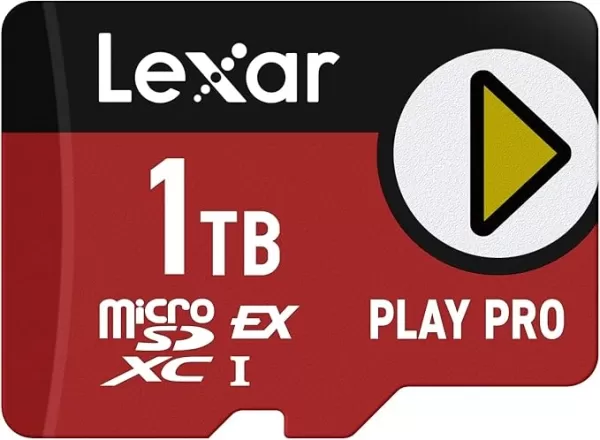When Nintendo unveiled the Nintendo Switch 2 last week, it confirmed that the console will only support expansion via MicroSD Express cards. While this may be frustrating for users with a collection of standard MicroSD cards, the decision is actually quite logical – MicroSD Express offers significantly faster performance.
Thanks to their advanced interface, these cards can achieve read/write speeds comparable to the UFS (Universal Flash Storage) used in the Switch 2’s internal storage. This is crucial because it means games stored on an expansion card should load almost as quickly as those installed internally – at least in theory. The tradeoff, however, is that more affordable non-Express MicroSD cards will not be compatible.
MicroSD vs. MicroSD Express
Over the years, MicroSD cards have gone through six different speed classifications. The earliest SD cards offered a mere 12.5MB/s – extremely slow by today's standards. Faster formats soon followed, starting with SD High Speed at 25 MB/s, and eventually leading up to SD UHS III (Ultra High Speed) with speeds of 312MB/s. However, five years ago, the SD Association introduced the SD Express standard, which delivered a major leap in speed.
The key change this time is that SD Express uses a PCIe 3.1 interface instead of the older, slower UHS-I standard. PCIe is the same interface used by high-performance NVMe SSDs, enabling significantly higher speeds. Full-size SD Express cards can now reach data transfer rates of up to 3,940MB/s – a huge jump over previous generations.
While MicroSD Express cards can’t match the top speeds of their full-size equivalents, they are still remarkably fast, hitting up to 985MB/s. That's three times the speed of the fastest non-Express MicroSD card available.
Why Does the Switch 2 Require MicroSD Express?
Nintendo isn't typically open about the reasoning behind its hardware specifications, but there are several compelling reasons why the Switch 2 should require MicroSD Express cards for storage expansion. Speed is the most important factor. If you install the same game on both a standard UHS-I MicroSD card and a MicroSD Express card, the latter will load much faster due to its PCIe 3.1 interface – a sign that this requirement may soon appear in handheld gaming PCs as well.
Since the internal storage of the Nintendo Switch 2 has been upgraded from eMMC to UFS (Universal Flash Storage), it makes perfect sense for Nintendo to demand similar speeds from external storage media. While we don't yet know exactly how fast the internal storage will load games like Breath of the Wild, early demonstrations suggest major reductions in load times – with fast travel loading 35% faster according to Polygon, and initial loads improved by three times according to Digital Foundry. These gains could stem from the faster internal storage, the more powerful CPU and GPU (which can decompress data quicker), or a combination of both. The bottom line is that Nintendo needed its external storage to offer comparable speeds so that future games requiring fast data access won't be held back by slower SD cards.
This move also allows for faster storage options in the future. Currently, the fastest SD card standard is the SD 8.0 Specification, which permits full-size SD Express cards to reach speeds of up to 3,942MB/s. MicroSD Express cards aren't capable of such speeds yet, but it's entirely possible within a few years – assuming the Nintendo Switch 2 hardware can support it.
MicroSD Express Capacity Options
MicroSD Express cards have been slow to gain traction, and while that will likely shift with the launch of the Nintendo Switch 2, only a few models are available now. For example, Lexar currently offers just one MicroSD Express card, available in 256GB, 512GB, and 1TB capacities, with the 1TB model priced at $199.

Lexar Play Pro MicroSD Express
See it at Amazon
SanDisk, meanwhile, lists only one MicroSD Express card on its website, with a maximum capacity of 256GB – matching the internal storage of the Switch 2. By the time the Nintendo Switch 2 officially launches, don't expect many MicroSD Express cards to exceed 512GB. Fortunately, that should change quickly as more manufacturers, like Samsung, begin producing these memory cards.

SanDisk MicroSD Express 256GB
See it at Amazon

 Latest Downloads
Latest Downloads
 Downlaod
Downlaod




 Top News
Top News









